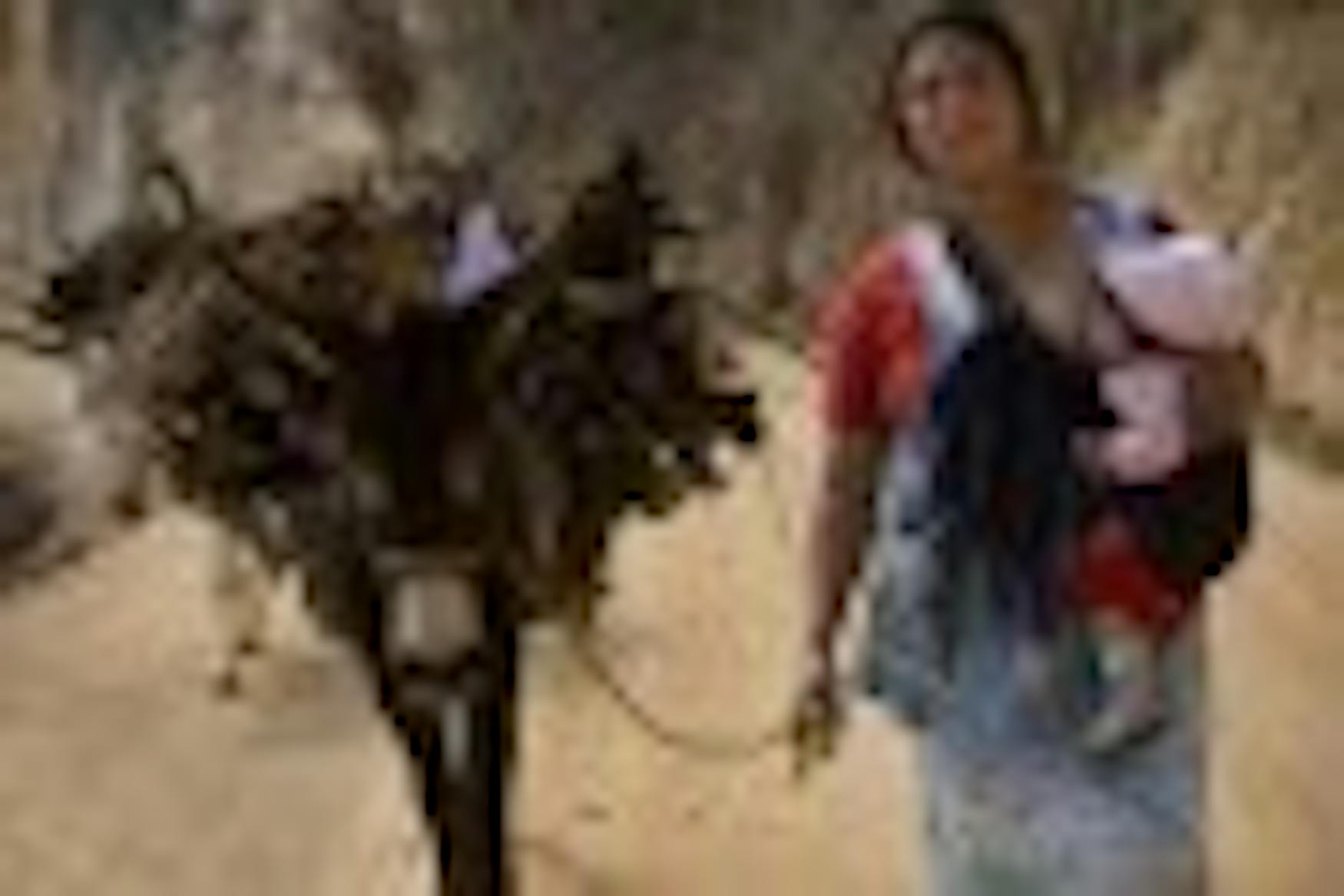"No Man's Land" chronicles the tribulations of Mexican women
Over the past few years, life in Oaxaca has been turned on its head. The citizens of this mostly rural Mexican state, nestled on the southwestern bend of the Pacific coast once led traditional, family-centered lives. Men worked, women ran the household, and that was that. But then the work dried up. As jobs became scarce, the men began to leave for America in search of money to send back to their families. Some began to leave, then more, and more, until finally some towns had as much as 80 percent of their men in the U.S. with the women left to run things.It was this dramatic scenario that first drew photographer Dana Romanoff to the area back in 2006. Over the next few years, living in three different villages in Oaxaca, Romanoff used photography to tell the story of the women who must face this poverty. After appearing in National Geographic, her work is now on display in the Kniznick Gallery at the Women's Studies Research Center. Though the exhibit has been open to view since September, it officially opened last Tuesday, with a reception featuring Romanoff herself as well as speeches by the center's director, Prof. Shula Reinharz (SOC), and by Women's Studies Research Center scholar Georgia Sassen, who read a poem detailing the generations of immigrants who have come to Massachusetts, beginning with the Lowell Mill girls. Romanoff spoke about her experiences in Oaxaca, how she got to know the local women and saw how they coped with the loss of their husbands, fathers, brothers and sons, all the while making sure things ran smoothly at home. But Romanoff doesn't just want to document these stories; she also hopes her exhibit will show Americans the other side of the hot-button issue of immigration. She hopes that Americans will understand where many of these immigrants come from and why they partake in the often-dangerous border crossing, leaving their families behind in order to help them out of the poverty that's become rampant in places like Oaxaca. By doing this, we might see immigrants not just as a faceless mass but as real people going to great lengths to make life better for their families.
The exhibit reveals two sides of life for the women. First is the despair and hopelessness that can overtake those left in Oaxaca. The photo "Maguey" is an excellent example of this. A view of the village of San Marcos Tlapazola, a tiny cluster of buildings out in the harsh Oaxaca landscape, it has a caption that tells about the maguey plant. Once a cash crop for the farmers, it has since become worthless, with most of it being used as firewood. It's a stark portrayal of just with what these women have been left. With no work available and the mainstay of many farms useless, the women are forced to carry on, trying to survive while waiting for money to be sent for support. "The Last Supper" conveys the pain of departure: It shows a family's small adobe house as they eat a going-away meal for one of their sons, who's only 13 years old and about to join his father in California. Many photos show how families have been torn apart by this poverty, with children not knowing their fathers and wives desperately missing their husbands. One woman had commented, "If he were here, we may only have beans to eat. But at least we'd be together."
Despite the desolate and often heartrending image that takes shape, the exhibits balanced by a strength, resilience and even hopefulness that marks these women and runs through just about every picture shown. Sure, the maguey is worthless, but the women still harvest it, just as the men had. In "Firewood," a woman leads a team of mules to the nearest town, in control and looking straight ahead while nursing her 5-month-old child. These women have been forced into this role, but they fill it knowing that their loved ones are relying on them. The traditional male-dominated society has been replaced by one ruled by women, many of whom are tasting independence for the first time. Estr Cruz Cruz embodies this independence. Refusing to marry, she takes care of her parents, runs the house, a shop, farms, and leads the local women's group. She appears in many of the photographs and perfectly demonstrates the fortitude that these women have found within themselves.
"No Man's Land" chronicles a part of the world most Americans have never seen, brings the viewer into both the sadness and strength these women display and finally makes the viewer think, both about where so many of the recent immigrants have come from and what they left behind.
It's eye-opening, amazing, and, most importantly, it's open until Dec. 16. That's almost a month left to see the great pieces of art and learn about the incredible story of Oaxaca. Use the time well.



Please note All comments are eligible for publication in The Justice.